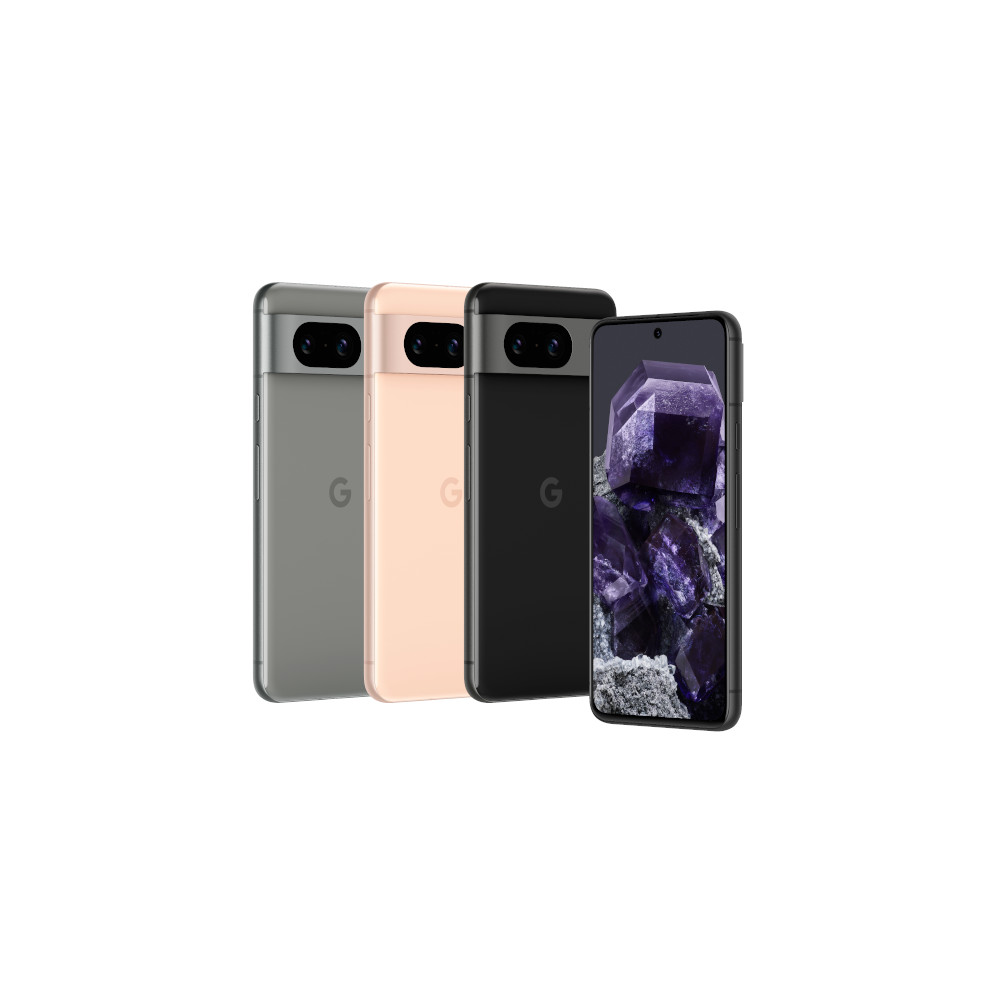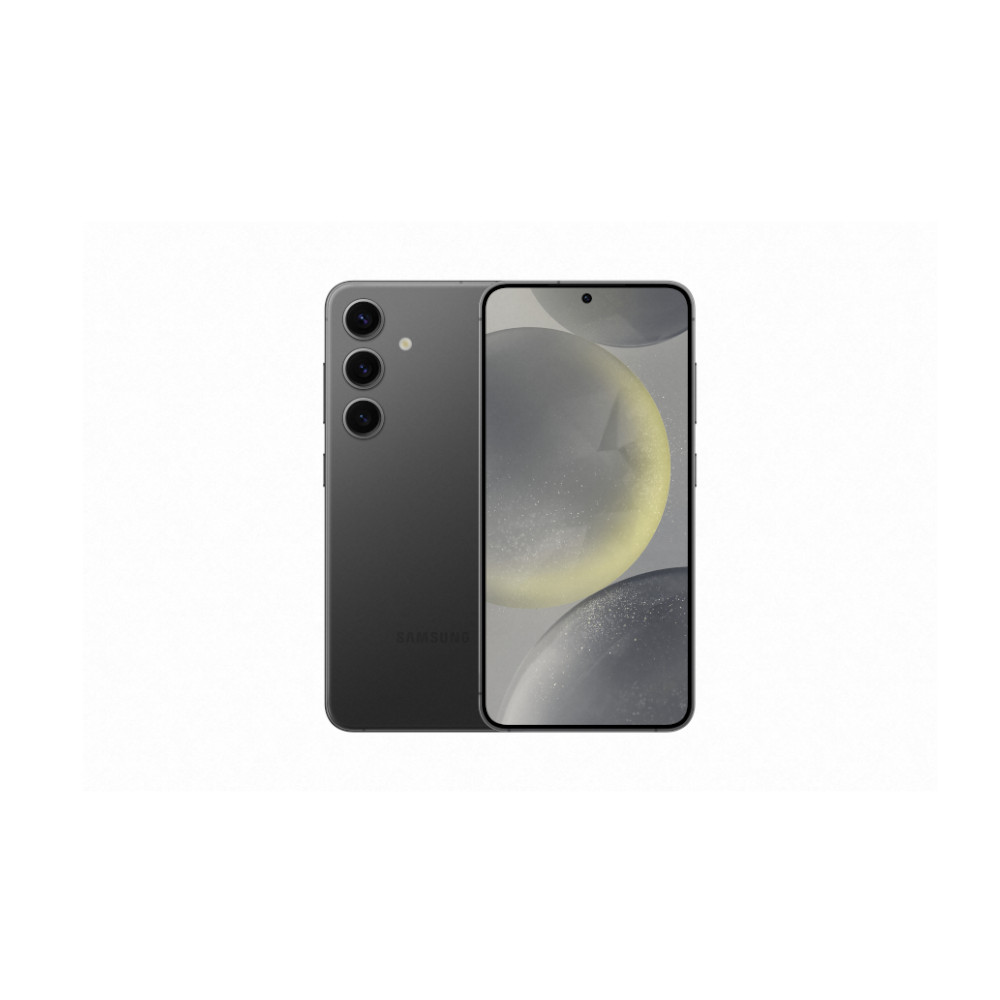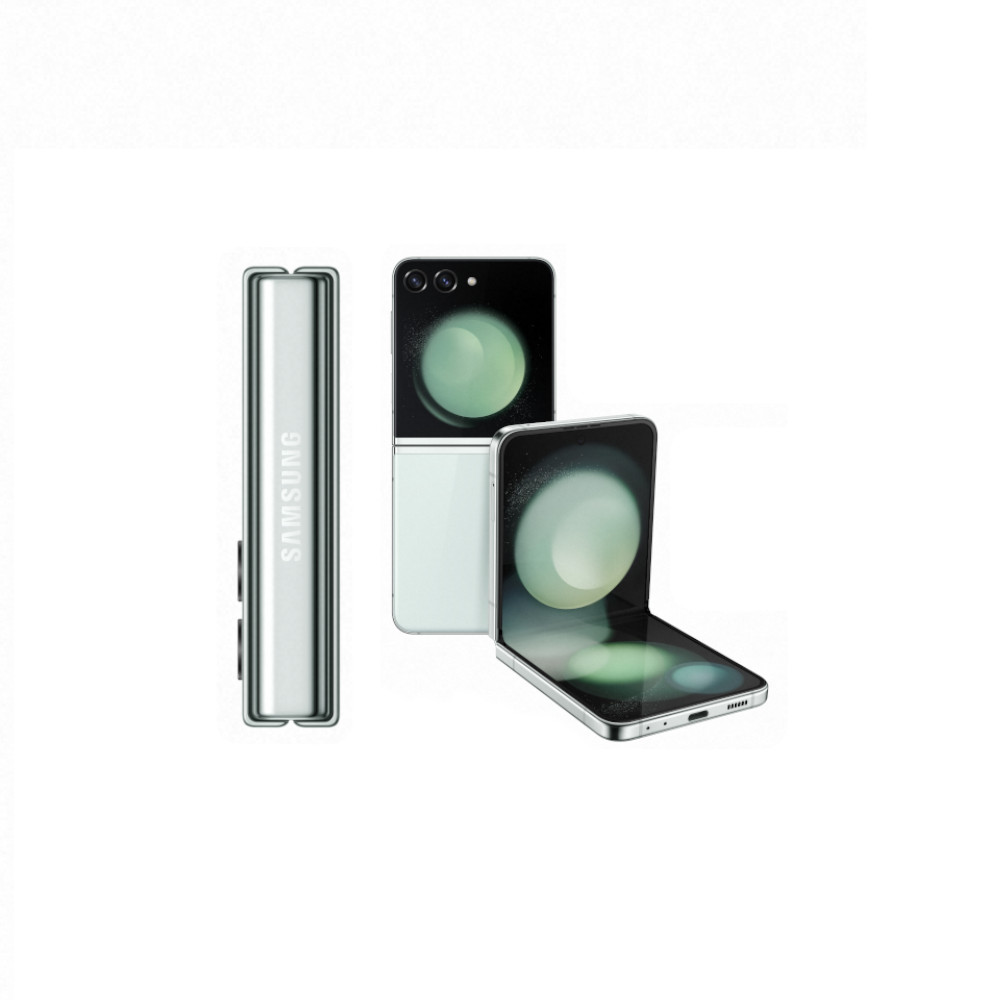Affiliate links on Android Authority may earn us a commission. Learn more.
The best small Android phones you can still buy in 2024










Small Android phones are virtually extinct in 2024, at least by the traditional definition. Small phones once referred to those well under 6 inches, but with shrinking bezels and other design improvements, display sizes have ballooned. Now, anything under 6.2 inches is considered relatively small. There are many reasons why displays under 6 inches are pretty much extinct now, but the video above does a great job of summing up some of the key points and how the small phone market has changed. In this guide, we take a look at the best small Android phones available today, even if they might seem like monsters compared to phones from just five or six years ago.
Buyer's Advice: Finding the right type of small phone in 2024
There are essentially two sub-classes when it comes to today's smaller phones. First, you have traditional candy bar phones with displays hovering closely to the 6-inch mark, and then you have foldable flip phones that are smaller when it comes to pocketability but not screen real estate. Which should you buy? It really depends on what you prioritize:
- Traditional Android phones are best for one-handed use and if you care more about the footprint when you are using it than when it's in your pocket.
- Foldable flip phones are best if you love big screens but want something that's easier to pocket or takes less room in a handbag.
The Google Pixel 8 is the smallest Pixel flagship available


Considering it packs a 6.2-inch display, it might seem odd to think of the Pixel 8 as a small phone. Relative to the more powerful flagships that are close to seven inches in size, it’s actually quite small when you consider what’s become the norm for many. For those who want something smaller with flagship level smarts, the Pixel 8 is one of the best choices around.
The Google Pixel 8 is a bit more expensive than its predecessor, but it also offers several substantial upgrades, including new AI features and the third iteration of Google’s in-house Tensor chip. This chip is designed to build on already strong performance while also addressing the Tensor’s past overheating issues. Although the Tensor isn’t quite as powerful as rival Qualcomm chips, it handles AI, photography, and other machine learning aspects brilliantly and is a great performer for day-to-day use. We also need to mention Google’s incredible update policy, which includes a whopping seven years of updates and hardware support. That’s two lifetimes in the smartphone era, and who knows where we’ll be in 2030.
What makes it stand out
- Value: The price is slightly higher than last year, but this phone will last a long time with seven years of updates.
- Excellent photos: The Pixel 8 is a great point-and-shoot camera, mostly thanks to the continued focus on image processing.
- Software smarts: Clever Pixel features like Magic Eraser and AI call screening continue to grow and improve over time.
Pixel 8a is the best cheap alternative to the Pixel 8


While it’s actually slightly larger than the Pixel 8 despite its smaller 6.1-inch display, the Pixel 8a is also relatively small compared to the other options out there. The phone is also a bit cheaper than the Pixel 8, that is unless you can find the latter model on sale. You’ll be able to use the Pixel 8a with one hand just like the Pixel 8, though it will be a bit of a struggle depending on your hand size.
Under the hood, the Pixel 8a has a Tensor G3 processor and 8GB of RAM. That’s the same processor found in the main Pixel, so you’ll get a similar experience when it comes to AI and general performance. The Pixel 8’s biggest trade-offs are a weaker camera and cheaper body construction when compared to its more expensive older brother. Thankfully, you still get the same amazing update support. Google promises seven years of Pixel OS updates, security patches, and feature drops.
Looking for something similar but more affordable? You can get the Pixel 7a ($477 at Amazon) starting at $499, though it sometimes goes on sale for even less.
What makes it stand out
- Value: You won’t find another mid-ranger with better update policies and arguably some of the best specs.
- Above average camera: While it’s not the Pixel 8 camera, the Pixel 8a still has an above average camera for a mid-range phone.
- Software smarts: Clever Pixel features like Magic Eraser and AI call screening continue to grow and improve over time, and are fully support here.
The Samsung Galaxy S24 is the best small phone from Samsung


Samsung Galaxy phones have always been among the best Android phones you can buy, and the brand is committed to keeping a small phone option at just 6.2 inches. The Samsung Galaxy S24 has nearly all of the polish and aftermarket support that’s made Samsung the leader in the Android world for years, just in a smaller package. It comes with a powerful Qualcomm Snapdragon 8 Gen 3 for Galaxy or Samsung Exynos 2400 depending on where you live, and a sizeable 4,000mAh battery to keep it running throughout the day. There’s also a great display with a color profile that is fantastic out of the box. It’s a 120Hz variable display for speedy scrolling in compatible apps, but the dynamic refresh rate can go as low as 1Hz to preserve battery life. Also note that although the screen is slightly larger than the Galaxy S23, the overall size is the same due to reduced bezels.
Our only major complaint about the internals is the lack of storage space, which starts at just 128GB. We highly recommend swinging for the 256GB model, especially considering the missing microSD card slot.
Samsung’s flavor of Android is highly customizable and a joy to use, although there is more bloatware than you’ll find on devices from other OEMs. Still, that’s a small price to pay for fantastic aftermarket support, including seven years of OS and security updates. Overall, the Samsung Galaxy S24 is a solid phone for just about anyone. It’s not the smallest Android phone you can buy, but it’s small enough to be convenient and comfortable to hold with one hand. That said, the boxy metal edges are a different feel if you’re not used to them.
What makes it stand out
- Great cameras: The Galaxy S24’s cameras are a step above other small phones in this price range.
- Gorgeous screen: The 6.2-inch AMOLED is a bit on the large side (for this list), but it features great color and sharpness.
- Fantastic support: With five years of security updates and four years of OS updates, this phone will last a long time.
The Samsung Galaxy Z Flip 5 is a different kind of small phone


Every other phone so far has packed a traditional candy bar design that’s small enough to be used with one hand, even if some phones are harder to do this with than others. The Galaxy Z Flip 5 is one of two options on this list that are a different kind of small phone: Foldables. The Galaxy Z Flip 5 manages to keep a small footprint thanks to its folding design.
Folded, the Z Flip 5 is is a truly tiny Android phone that’s perfectly pocketable. Opened, it has a much larger 6.7-inch AMOLED display. It’s also easy to use with one hand thanks to its thinner and taller profile. Of course, they won’t handle quite as well as smaller candy bar phones. To be fair you can use it when it’s folded. On the front of the device, there’s a large Cover Screen that’s great for checking notifications or the time without opening the device, which is good news for battery life and removing distractions from your life.
Moving past the design, the Snapdragon 8 Plus Gen 2 for Galaxy processor is a top performer, capable of powering through anything you can throw at it. The battery is noticeably smaller than standard phones at just 3,700mAh, which made it to the end of a single day in our testing. However, you can extend battery life by relying more on the smaller outer screen. Camera performance is also great, but not quite as good as the mainline Galaxy S24 series. It keeps the same camera lenses as the year before, which we found to be capable shooters. The primary camera, in particular, is great for capturing details, and the ultrawide is nice for niche shots. Overall it’s great for a small Android phone, but it won’t take the top spot in any camera shootouts.
The Samsung Galaxy Z Flip 5 isn’t a small Android phone in the traditional sense, but in many ways, it’s even better. It certainly isn’t cheap, but the cool factor of having a foldable is more than worth the price of entry. If you’ve been eyeing foldables for a while, this is the one that we can finally recommend to just about anyone.
What makes it stand out
- It flips: The Z Flip 5 opens up into a large 6.7-inch screen, just like the clamshell flip phones of olden times.
- Great software: With a few special features, this phone takes full advantage of its unique form factor.
- Solid cameras: Both sensors on this camera perform well, with Samsung’s trademark post-processing.
The Motorola Razr Plus is a good Z Flip alternative


The Motorola Razr Plus isn’t without its quirks, but it is arguably the best alternative to the Flip 5 and has a few advantages of its own. The Razr Plus takes on a design that’s not too different from devices like the Flip, though it was the first to bring a super-sized front display at 3.6 inches. It was also the first to officially support all apps on the front screen — though not all of them work perfectly on the scrunched display.
The Razr Plus is also known as Razr 40 Ultra in international markets, though it remains the same device with the same Snapdragon 8 Plus Gen 1 processor and 8GB of RAM. You also get 256GB storage, a 3,800mAh battery, and a dual camera with a 12MP wide and a 13MP ultrawide shooter. The Razr Plus is sold in the United States starting at $999.99, making it a reasonably affordable option. In our Motorola Moto Razr Plus review, we found it to have great software, decent fast charging options, a great design, and solid performance. It also has an IP52 rating, which makes it special because it has some dust protection, unlike many other foldables. Really the biggest downside is the Motorola Edge 50 has already been announced, which means the next generation Plus is likely right around the corner. Of course, that also means you might be able to find this with a big discount.
What makes it stand out
- It flips: Just like the Z Flip, you get a big screen when you need it but a phone that’s perfectly pocketable.
- Great software: With a few special features, this phone takes full advantage of its unique form factor allowing full apps and more.
- Great fast charging: 30W fast charging helps the Razr Plus stand a bit ahead of the Flip in terms of charging speeds.
What we look for in the best small Android phones
Size is obviously our main concern when selecting the best small Android phones, but there are several factors we consider. Here’s a quick breakdown:
- Size: For this list, we considered phones with screen sizes of 6.1 inches and below. This is larger than phones from the past, but unless you’re willing to use a phone from five years ago, this is, unfortunately, as small as it gets. It’s also worth noting that screen size is measured diagonally, so the exact dimensions for each phone will vary.
- Price and value: More expensive phones are not always better, and small Android phones are not always cheaper. In fact, many of the few small Android phones on the market are more expensive than budget alternatives, but still represent a good value for what you get.
- Performance: All of the small phones on our list have flagship power, although some are older-generation models. This isn’t necessarily a bad thing, as many newer flagship processors struggle with heat issues.
- Cameras: Small Android phones tend to have fewer lenses, but that doesn’t mean they aren’t capable shooters. All of our picks above take great pictures, but you will have to sacrifice a telephoto lens.
- Battery life: Size constraints mean smaller Android phones generally have smaller battery capacities, but all of the phones we’ve selected are capable of making it through a full day’s use.
- Build quality: Phones are only getting larger, so the more durable your phone is, the longer it will last. Premium materials like aluminum frames and Gorilla Glass Victus are what we look for.
- Software: Although all of these phones run Android, each manufacturer’s version of Android differs, as does the number of years each phone will receive updates and support.
Frequently asked questions
We can’t pinpoint an exact reason why smaller smartphones are so rare these days, but we can say it’s an industry trend that’s been developing for years. The market has slowly moved to larger screens, which naturally translates to bigger devices.
They are rare, but some high-end devices do come in smaller iterations. These include models like the Xperia 5 IV, ASUS Zenfone 10, Samsung Galaxy S24, and others. Again, they are rare, though.
Although it’s counterintuitive, cheap Android phones tend to be on the larger side. In fact, most of the small Android phones on our list are premium devices with price tags to match.